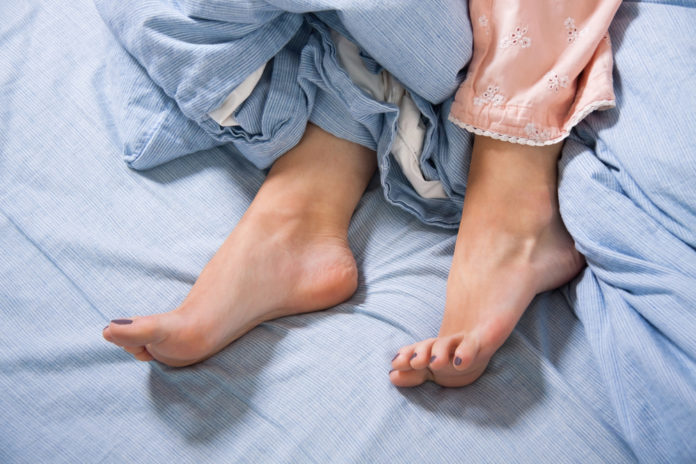According to the National Heart, Lung, and Blood Institute, an approximate 5 to 15 percent of the American population are living with restless leg syndrome, a condition in which the nervous system causes an impulse of leg movements. The urge is primarily desired to relieve sensations, including an uncomfortable itch or pins and needles feelings in the legs. Reduce the discomfort and cure restless legs with these 9 tips.
What Causes Restless Leg Syndrome?
More is still to be learned regarding the causes of restless leg syndrome, as in most cases of the RLS, the cause is unknown. However, a genetic component may lead to its surface, along with low iron in the brain, disruptions of neurotransmitters, and individuals living with Parkinson’s disease. Although the evidence is unconfirmed, additional speculations suggests pregnancy, medications, and certain chronic diseases may also cause RLS, including kidney failure and diabetes.
Restless Leg Treatment
Treatment modalities are quite variable and extensive, as managing the underlying cause may cure RLS completely while others may benefit most from prescribed medications. The following are diverse ways to manage and cure restless legs:
1. Supplementation
Supplementing with a multivitamin may patch nutritional deficiencies that have associations with RLS, including folic acid, magnesium, and vitamin B. And as identified above, iron deficiency may cause RLS. Supplemental iron may be beneficial but only after discussing with a physician and if iron levels are diagnosed to be low.
2. Exercise
Light to moderate exercise can help relieve leg pain along with providing additional health benefits to the body. The American Heart Association encourages at least 30 minutes of exercise five out of the seven days of the week, though can be modified to your comfort level. Walking, biking, and swimming may be valuable activity options for RLS.
3. Relaxation Techniques
Minimizing stress and feeling relaxed may help manage restless legs. Relaxation techniques may include a taking a warm bath, practicing meditation and yoga, flipping the pages of your favorite book, or whichever other personal relaxation technique you prefer.
4. Massage
Rubbing the affected area may be beneficial to relieve RLS pain, especially helpful right before bed. Applying warm or cool packs to the muscles may also ease symptoms associated with RLS.
5. Sleep
Achieving adequate sleep and maintaining appropriate sleep-wake cycles may be beneficial in reducing RLS symptoms. The National Sleep Foundation encourages adults to obtain seven to nine hours of sound sleep each night. Creating a comfortable sleep environment with minimal lighting and cozy sheets can also help achieve greater rest and relaxation.
6. Medications
Though medicines are not always the answer, over-the-counter (OTC) medications may offer quick relief. But if RLS becomes too severe, muscle relaxers, anticonvulsants, and other medications may be an effective way to manage RLS symptoms.
7. Medication Manipulation
In addition to OTC’s, identifying the side effects of already prescribed medications can help determine whether or not RLS may be medication-induced.
8. Disease Management
Considering the potential for diabetes, hypertension, and other diseases to cause RLS, managing and correcting the underlying condition may correct RLS symptoms.
9. Smoke Cessation
Cigarette smoking and alcohol may be trigger or aggravate RLS symptoms. Giving up smoking and tobacco products can lessen this risk, along with limiting alcohol intake to the recommended servings of no more than two drinks for men and one for women per day.









